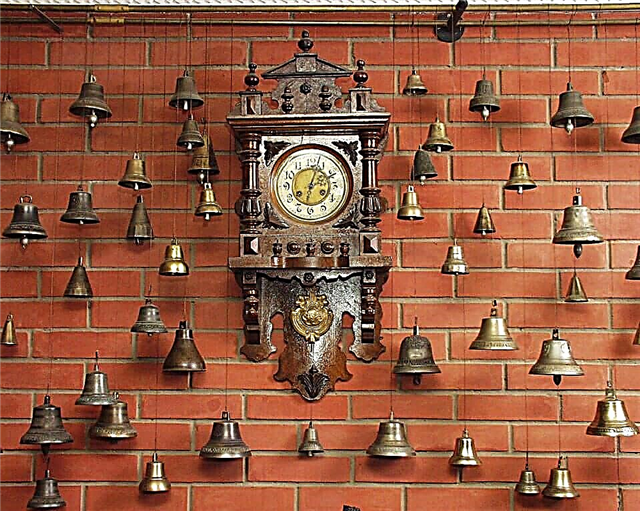Address: Germany, Munich
Foundation date: 1836 year
Start of building construction: 1826 year
Completion of construction of the building: 1836 year
Coordinates: 48 ° 08'53.8 "N 11 ° 34'11.9" E
Content:
Short description
The capital of Bavaria is famous throughout the world for its luxurious castles, palaces and residences. Sights and monuments of history and architecture in cozy Munich are simply not to be counted.

One of its main attractions is the Old Pinakothek, which hundreds of thousands of art lovers dream of visiting. around the world. Many tourists quite often ask their guides questions: “What does the word Pinakothek mean in general? Why are invaluable canvases of artists kept in a building bearing a seemingly strange name? " The answers to all questions related to the Museum of Paintings in Munich are rather prosaic: Pinakothek is a Greek word that can be literally translated into Russian, like "storage for boards or paintings." The thing is that the first part of the word in Greek means both "board" and "picture", but all over the world it is customary to call the collection of paintings by the Pinakothek.
By the way, in Munich there is not only the Old, but also two New Pinakothek. From the name it becomes clear that the Old Pinakothek, which, in fact, will be discussed, contains the works of artists who lived during the Middle Ages and up to the 18th century. But in the new Pinakothek there are paintings belonging to the brush of masters who lived already in the 19-20th centuries and even our contemporaries. Before talking about the history, architecture, interior of the building and the most valuable exhibits stored in it, I would like to clarify that there are pinakotheques not only in Munich, but also in the Vatican, Bologna and many other European cities.

To be extremely precise, we can say that the Pinakothek in Munich does not even mean the museum building itself, but a collection of paintings, the cost of which is simply impossible to establish. According to contemporary art critics, Raphael's canvases, some German artists are simply priceless and do not have the right to be in one of the private collections, they must belong to the people. “To the people of Bavaria!” The proud inhabitants of Munich clarify. Naturally, this is not surprising, because a huge collection of paintings, known all over the world under the name The old Pinakothek in Munich, was collected for the most part by representatives of the legendary Wittelsbach dynastywho ruled Bavaria for 700 years. One of her descendants still lives in the Nymphenburg Palace, whose halls and rooms are also true works of art.
Old Pinakothek in Munich - collection history and building construction
The unique collection of paintings has a long history dating back to the reign of William IV, who commissioned famous artists to write canvases related to the ancient history of mankind. In 1529, the brilliant artists Faselen, Altdorfer, Beham, Breuja and Burgkmayr took over the work. The first painting, which started the collection, depicts the legendary battle between Alexander the Great and Darius. Painter Altdorfer painted this beautiful picture, which still continues to delight connoisseurs of beauty, who at that time had already become famous for his canvases of religious and military themes.

By the way, modern experts consider Altdorfer to be the founder and the brightest representative of the so-called “school of Danube painting”. As is known from documents telling about the history of the collection, Wilhelm IV was a real connoisseur of works of art, and in addition to the ordered paintings, he acquired canvases by Albrecht Durer.
As mentioned above, William IV only laid the foundation for a huge collection that anyone can see today. After him, the collection was constantly replenished: at the time when the Palatinate was united with Bavaria, the best paintings from other cities were selected for the Pinakothek, which were miraculously saved during the capture of Dusseldorf, Mannheim and Zweibrucken by French troops.
In the 19th century, the collection of beautiful paintings was continued by King Ludwig I, who is still considered a real art critic. He personally took part in the work on the systematization of the already huge collection by that time, and continued to acquire the best and most valuable paintings not only in Germany, but throughout the Old World. Surprisingly, the Bavarian king, who enjoyed the magnificent canvases in his palace, belonging to the brushes of the greatest artists, realized that all this beauty and great art should not belong only to him.

Ludwig I is one of the few rulers who loved his people immensely. The sense of selfishness was never inherent in Ludwig I, and he commissioned the talented architect Leo von Klenze to develop a plan for the museum building, in which masterpieces of painting could be displayed for all to see. In 1826, a large-scale construction of the building began, which later received the name "Old Pinakothek"... It is worth noting that all the work was completed in a record time for those times: already in 1836, the first paintings were transferred from the royal palace to the new building. Wanting to instill in his subjects a sense of beauty, the king issues a decree that every Sunday the entrance to the Pinakothek will be free. In fairness, it should be noted that the residents of Munich were in no hurry to see the paintings, most of them were immensely glad that they were allowed to hold noisy picnics on the picturesque lawn in front of the Pinakothek entrance.
The Second World War, during which most of the monuments of history and architecture of Germany were damaged, did not bypass the Old Pinakothek in Munich. Bombings, shells and bullets have seriously destroyed the museum building. Almost all the paintings were safely hidden during the bloody battles that took place in Germany. The building of the Old Pinakothek was completely restored by restorers only in 1957. The work continued for over five years.

It is not surprising that the museum, which housed an invaluable collection of paintings, waited so long for its turn to be restored. After a terrible war, the Reichstag, Charlottenburg Palace and other monuments no less significant for every German had to be restored from the ruins. However, those terrible times are already in the distant past, and now the old Pinakothek is one of the most interesting places for residents of Munich and tens of thousands of tourists who come to see the sights of the capital of Bavaria.
The old Pinakothek in Munich - a priceless collection
Nowadays, a visitor who comes to the building of the Old Pinakothek can visit 19 huge halls and 49 (!) offices, which exhibit the very unique paintings collected over the centuries by the Wittelsbach dynasty. Almost 700 paintings are available for viewing, among this huge number of works of art and paintings by Raphael, and the very first painting from the collection, in which Alexander the Great fought with Darius. Naturally, it will not be possible to describe all the exhibits in the collection in one material. It is only worth noting that the collection of paintings includes Spanish and French painting, Dutch and Italian painting, and, of course, the most extensive is the collection of paintings by German artists. As mentioned above, The Old Pinakothek in Munich keeps within its walls only paintings painted before the 18th century.

The painting entitled "Madonna of the Carnation" deserves special attention.Probably, this is one of the most valuable exhibits, although it will not be superfluous to repeat, it is impossible to estimate in monetary terms the canvases from the Old Pinakothek. The painting "Madonna of the Carnation" was carefully studied by experts using ultra-modern technologies and, as it turned out, it belongs to Leonardo da Vinci himself. As soon as this news spread around the world, many fans of the genius artist and scientist rushed to Munich, because according to official data, this picture is the only one in Germany, which was painted by Leonardo da Vinci.
When describing the Old Pinakothek, one cannot but dwell on the works of Albrecht Durer, the most famous of which are his own self-portrait and a painting entitled "The Four Apostles". There is also a "scary place" in Munich's Old Pinakothek, near which you can almost always meet huge crowds of tourists. At this place hangs a painting called "The Last Judgment", belonging to the brush of Hieronymus Bosch, who received the nickname "Professor of Nightmares" during his lifetime. This canvas, made in dark colors, makes you think about life after death, many tourists claim that when you look at it, goosebumps cover the whole body. The terrible monsters that Bosch could embody in the painting torment sinners. Art critics say that all the monsters depicted at the "Last Judgment" are the embodiment of real nightmares that tormented many people. Probably, Bosch, back in 1480, according to the stories of his acquaintances, reproduced their most terrible visions on canvas.

If you try to talk about the interior of the Old Pinakothek in Munich, you will get just one sentence, or more precisely, one word that characterizes the museum in the best possible way. This word is "asceticism." There really is nothing superfluous in the building, no pieces of furniture, no decorative elements. Only the walls on which the canvases hang. Nothing should distract a person who has come to look at the priceless collection of the Old Pinakothek from contemplating masterpieces.
Currently, the entrance to the building where the collection of paintings is kept is paid. In addition, the tourist should be careful when visiting the building. It is prohibited to bring bottles of liquid or other items suspicious of security personnel to the museum. The thing is that after 1988 The old Pinakothek in Munich and its paintings are under constant protection. It was in 1988 that a man with a mental illness, he carried a bottle of acid into the building. He sprayed corrosive liquid on the paintings by Dürer. After this act of vandalism, restorers had to restore damaged canvases for many years. After this terrible incident, the security service of the Old Pinakothek is constantly on alert.











